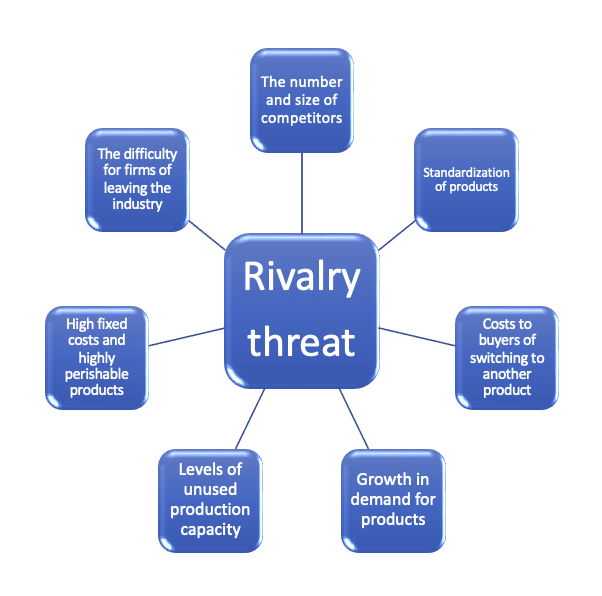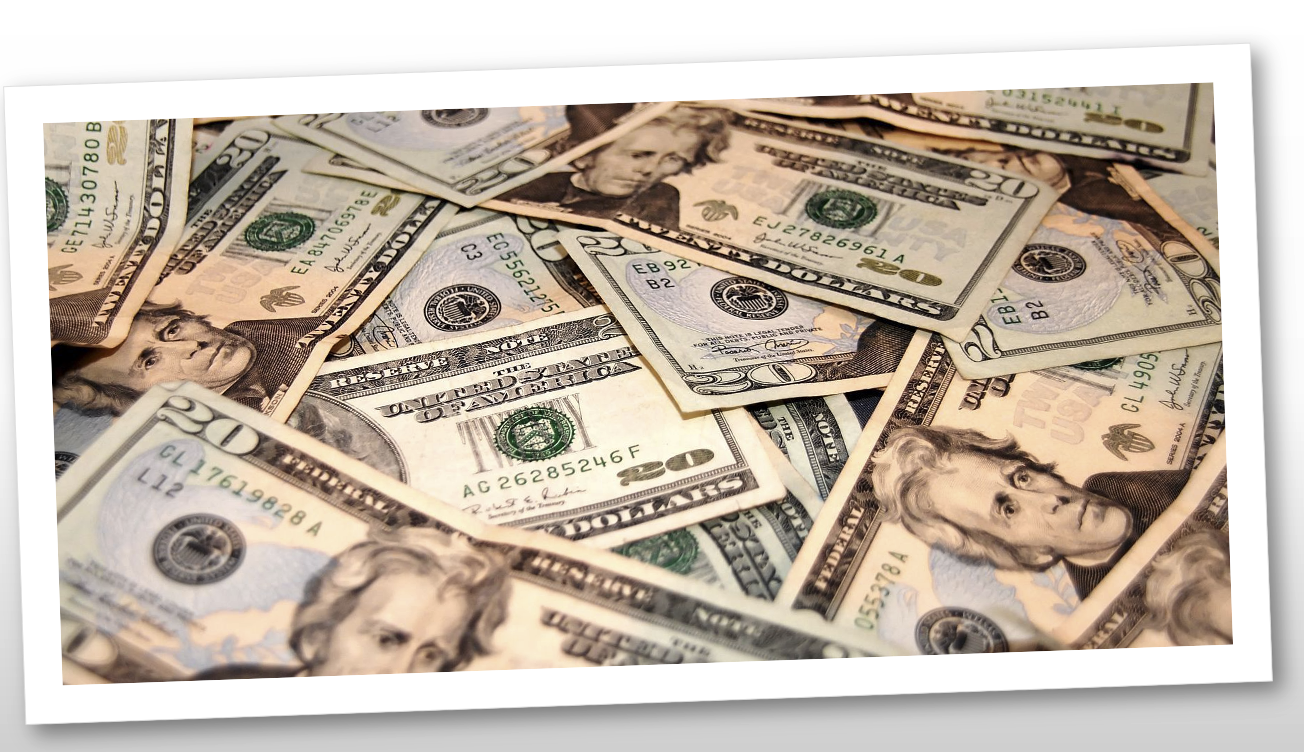Designing for superior business performance
A guide for technology, creative and startup leaders
Choice 2: Where we play - threat of rivalry
In this chapter
Overview of what is the profitability threat from rivalry
Factors that elevate the threat or rivalry.
Protecting against rivalry
Overcoming rivalry threats
Tools that can help build and sustain your understanding
Introduction
In an industry, most particularly a mature or declining industry,
there are a finite number of buyers and finite revenue.
Declining markets for example not only have limited buyers but declining
numbers of them. For businesses remaining in a declining industry,
rivalry will almost certainly increase.
Given the finite buyers, a sale and profit of one business comes at the
expense to the others.
Each business, in an industry segment, will make moves to attract and win customers.
These moves can include sales and promotions, better quality products or service,
wider range of products / services, and lower prices.
In response to these moves alternate companies will make countermoves to
respond to these moves.
Rivalry threat
The more of these moves that occur and intensity of them tends to either
1. Lower revenue i.e., sales and promotions reduce the cost to the customer and reduces the amount of revenue for the same sales volume. That is if a business could sell 100 units at $10, but now sells 100 units at $7 it earns less revenue for that 100-unit volume.
2. Increase costs through increased quality, service, research, and development potentially at the same sale price, it can be difficult to pass on increased costs to the consumer when there is high price rivalry.
Lower revenue and/or increased costs reduces the profitability of the industry. Some industries (combination of industry and location) will have minimal rivalry. In the presence of minimum rivalry businesses in the industry generally play along with each nicely and avoid race to the bottom price wars and so forth. Other industries will have higher rivalry affecting the profitability of the industry.
Rivalry of course is influenced by the threat of new entrants discussed next.
Given a situation where rivalry is low and profits are therefore good,
then new entrants will almost certainly eventually attempt to enter that market which
in turn increases rivalry as new players aim to win their share of the industry

Rivalry threat is influenced by the following factors.
The number and size of competitors.
Standardization across products.
Buyers switching costs.
Growth in demand.
Levels of unused production capacity.
High fixed costs.
High barriers to exit the industry.
Review of rivalry threat factors
Most of these elements are somewhat intuitive, so you can review these factors briefly here before we move on creating and overcome buyer power factors.
Number and size of competitors

The more competitors there are in an industry, the more likely that one or more of
them will take action to gain profits at the expense of others.
Fragmented versus consolidated industry
Fragmented industry
An industry with a lot of competitors of similar size is
considered a fragmented industry.
In a fragmented industry, it is difficult to keep track of the
pricing and competitive moves of multiple players.
Rivalry tends to be intense when there are a lot of competitors
with similar access to competitive resources and other threats factors are
present.
Consolidated industry
Consolidated Industries have far fewer competitors and tend to be
dominated by a few large companies.
These industries, usually experience much less rivalry.
Smaller and new competitors frequently do not have the capability to
respond to actions taken by large competitors.
In usual operating mode, the few large competitors are more aware of
each other and less likely to risk actions that may result in price wars.
Standardized or undifferentiated products
When products are standardized, or commodity-like, buyers are less loyal to a particular brand, and it is easier to convince them to switch brands. A driver may love and be loyal to their new Tesla automobile but have no affinity for which electric utility company supplies the power to recharge it. Utility companies tend to offer standardized services, therefore compete mostly on price. Industries with non-differentiated products e.g., nuts and bolts, plastics, commodities such as salt, sugar, wheat, corn are in industries likely subject to intense rivalry and should develop capabilities to compete on price.
Excess Unused Production Capacity
Unused production capacity is expensive.
Businesses generally aim to produce at or near their full production
capacity so that they can spread the fixed cost of labor, facilities,
machinery, and other production cost across more units.
Sometimes, they may aim to produce more product than the market demands,
to use their capacity completely.
Once, more is produced or is available than is demanded in the market,
then firms will often drop prices or risk having unsold product and
excess cash tied up in inventory.
This can apply to physical products but also professional services.
In professional services having people not working with clients,
can be unprofitable, so if in response to slow or stalled growth
there are an excess of consultants versus demands, then consulting
rates will likely drop to avoid the implications of non-engagement.
Another example in the physical products is in the weakly
differentiated automobile industry e.g., GMH, Ford, Toyota.
During an economic downturn, or even as new models come out, automakers
offer price cuts, provide rebates, and special sales incentives to buyers
so that they don’t have significant unused production capacity or lots of
inventory tide up in cash.
Compare this with Tesla and at various time Porsche where people are so
delighted with the value proposition of these companies,
they wait for the car to be produced and delivered.
Hence, these businesses generate better cash flow as cars roll of the
production line straight into the hands of buyers.
High Fixed Costs, Highly Perishable Products, High Storage Costs
Industries that produce or serve products in these three categories
sometimes find themselves with a supply of products that must be
sold quickly to avoid large losses.
Airlines, for example, operate with high fixed costs.
Most of the cost of a flight is in the fixed costs such as the airplane,
the fuel, and the pilot and flight crew.
Given a flight is going to have few passengers, an airline may
be tempted to discount steeply to fill as many seats as possible.
The variable cost of an additional passenger is very little,
so selling a seat for less enables it to recover its fixed costs.
Firms that sell highly perishable products,
such as fruits or vegetables, face similar problems.
As food nears the date when produce will spoil, grocery chains often
steeply discount it rather than lose the sale completely.
Products with high storage costs exhibit the same characteristics.
If firms have an oversupply and are forced to store the product,
they may discount the price to avoid storage costs.
In all three cases, steep discounting leads to increased
rivalry as competitors are forced to respond with discounts
of their own or be left with losses while others recoup their production.
Seasonal fashion products are also subject to rivalry when there is excess stock.
End of season sales are frequent in the retail clothing industry.
Given the change in season demand for the style of clothing diminishes.
Businesses want to clear the stock as:
1. there is no guarantee the demand will return next season as new fashion trends and consumer tastes change,
2. avoid the impact of reduced cash flow on a business as a consequence of having cash tied up in unsold inventory

High exit barriers
In some industries, companies don’t exit even when they are not
making a lot of money.
Most often, they stay because they have made investments in specialized
equipment that can’t be used in any other industry.
For example, a specialist robotic production line is very expensive
and cannot be used in any industry.
If the firm exits its’ industry, its production asset loses most
of their value.
Another barrier to exit is labour or government agreements that make
it difficult to close the business. Emotional ties to employees or a
business can also support less than rational business decisions by
leadership to stay in business.
As industry growth slows or declines, and more businesses decide to
stay and fight it out due to difficulty exiting the industry,
they will of course compete with more intensity driving down profitability.
Protecting against intense rivalry
See the next section - Being a disrupt or winner in high rivalry environments. The solution is the same for both
Being a disruptor or winner in high rivalry environments
Peter Theil co-founder of PayPal, Palantir Technologies, Founders Fund, and the first outside investor in Facebook has said ‘Competition is for Losers’. Being the disruptor in an industry with high rivalry requires a uniquely differentiated product that meets customer needs in ways the existing industry rivals cannot. It can be one of either
Cost leadership - meaning your value propostion meets the needs of a market segment and capable of doing so at the lowest cost.
Differentiation - meaning your value propostion meets the needs of a market segment in a unique and valuable way providing satisfaction or delight unavailable in other offerings. Thus at least of some segments of a market it has no rival.
Both - meaning your value proposition meets the needs of a market segment in a unique and valuable way providing satisfaction or delight unavailable in other offerings and at the lowest cost.
Tesla’s electric vehicles are an example where for several years, Tesla has had no, then little but now emerging direct competition. An industry with high rivalry is almost certainly poorly differentiated (what W. Chan Kim and Renée Mauborgne in their book Blue Ocean Strategy would call a Red Ocean). Blue Ocean strategy identifies some contemporary examples of solutions that escaped High Rivalry in an industry and move to a Blue Ocean where rivalry is non-existent (at least for some time).
You will see more about these options during this guide. Particularly, when we progress to developing your unique value proposition.
Continue with complements opportunity assessment
Assess and adjust the attractiveness of your where to play choice in StrategyCAD™
Try it Learn moreYou can try StrategyCAD™ free for 30 days to build your high performance strategy